Keef CEO Travis Tharp is Buoyant on the Future of Cannabis-Infused Beverages
Marijuana Industry News December 9, 2021 MJ Shareholders 0

Not many cannabis brands have applied the experience and discipline that comes with longevity as successfully as Colorado-based Keef Brands, a product-based MSO currently found in seven states – Arizona, California, Colorado, Maine, Missouri, Ohio, and Oklahoma – in addition to Puerto Rico and the Canadian provinces of Ontario, BC, and Alberta. Keef was founded in 2010 by Boulder-born and raised brothers, Erik and Kelly Knutson, who recently handed the company over to former COO and current president and CEO Travis Tharp, who happens to have been  besties with Erik since the two were toddlers sucking down milk bottles like beers at a frat party.
besties with Erik since the two were toddlers sucking down milk bottles like beers at a frat party.
“I have known Erik since we were three years old,” recalled Tharp during a call last week with CBE, which has profiled the Keef journey several times over the years. “We went to preschool together, grew up in the same neighborhood, and have been lifelong friends, closer to brothers. We took wildly different paths coming out of high school, and we’d lost touch for a few years, but reconnected I would say in the late 2000s. I had just graduated business school at UCLA, and he came out and visited, and he said, ‘You know what? I’m going to put cannabis in a soda.’ I was like, ‘Dude, you’re crazy.’”
Crazy like a fox, it turned out. “After that initial conversation, we stayed in touch,” added Tharp. “I was doing two-sided marketplaces and a lot of tech startups with VC funding, and it was a wild time, and he was doing wild stuff in the early days of cannabis, which I give those guys so much credit for. In any interview, I always want to make sure that we give appropriate respect to the first people that jumped into this, because I jumped in when there was a little bit more structure, probably earlier than most right now, but for the folks that really dug in at the beginning, I can’t imagine some of the things they had to go through.
“We kept in touch for about five years,” he continued. “We were still doing different things, but I started talking to Erik about how difficult it was in the industry I was in because it was so highly regulated. There was no fungibility across markets and you had to basically build a business in every single market, and he goes, ‘Well, that’s basically what we have to do.’ And the more we dug into it, the more we realized that there were so many commonalities between our businesses that it became a very logical decision to say, ‘Hey, I can come help you scale this the way we started talking about in late 2015,’ and then I joined in the Spring of 2017.”
Keef was kind of awkwardly known as both CanCore Concepts and Denver Packaging Company back then, two  entities that, as Tharp explained, remain associated with Keef Brands to this day, as of course does SeroVita Holding Corp. “Let me spend just a minute or two to give a brief overview of our structure,” he said. “SeroVita Holding Corp is our parent company, and Core Concepts has always been the owner of the IP for the Keef brand and has been the company that contracts with licensed manufacturers in each of the territories in which we operate.”
entities that, as Tharp explained, remain associated with Keef Brands to this day, as of course does SeroVita Holding Corp. “Let me spend just a minute or two to give a brief overview of our structure,” he said. “SeroVita Holding Corp is our parent company, and Core Concepts has always been the owner of the IP for the Keef brand and has been the company that contracts with licensed manufacturers in each of the territories in which we operate.”
I asked if CanCore is a subsidiary of SeroVita. “It is,” said Tharp. “Denver Packaging Company, just for reference, was our first licensed manufacturer in Colorado. It has a different capital structure and was a licensed entity that Erik and a couple of other investors held. It was our first licensee, and it has always been the R&D sandbox that we use to test out products and figure out how we can take products to other markets. So, it’s been a very strong relationship with Denver Packaging Company.
“I just I wanted to make sure that you understood the interrelationship and where the dividing line is,” he added, “because as SeroVita and CanCore Concepts, we are the owner of IP and license IP to our licensed manufacturers.”
I mentioned that Keef appeared to be using an expansion strategy similar to the one employed so successfully by Wana Brands, the Colorado-based gummy manufacturer recently acquired by Canopy Growth. “Yes, it is, and we are very close with Wana,” said Tharp. “We love the team at Wana because they’re Boulder-born as well, and we actually co-located with them in a couple of different locations. Nancy [Whiteman] and her team, we have worlds of respect for them, and they’ve been strong allies in trying to vet who are good partners in each of these markets. And I think Nancy would admit that we’ve had successes and we both had failures with partnerships, but one thing that we have both been is resilient and able to learn from the mistakes. We’ve made just about every mistake you can think of, but that’s actually become a very positive thing, because we are pretty battle hardened in the world of cannabis expansion. As long as we don’t make the same mistake twice, we’re good.”
Contrary to more capital-intensive models, Keef’s reliance on partnerships has more than proven itself, said Tharp. “One of the benefits of the model we took, an asset light model, is the ability to scale,” he explained. “We have not raised a considerable amount of money. By and large, over the last 11 years in total, it’s about $6 million, and we have no debt right now. We’re cashflow positive and expanding, and to be in that position after all this time, it’s a pretty unique position in cannabis right now. Because there are a lot of people that have a lot of funding and have very aggressive goals they have to meet, and there are a lot of folks that are struggling to make their cash flow needs.
“I’m very proud of our teams,” he added. “We had to buckle down, especially when COVID came, and it really forced us to look inward and ask, what are we really good at, because at the time we had been toying with some CBD launches and traditional retail channel launches, which are really fascinating, because if you’re in a position where you want to have brand exposure in other markets, pre-recreational legalization, that’s a really interesting tactic. But when you go into a pandemic and none of the other new products are going to go onto the traditional shelf, we really had to lean into our THC positioning, and that focused us a lot. And I’m appreciative of the effort that our team put in, and if there’s anything good that could come out of the last crazy year and a half, it really sharpened our focus on where we could compete, where we are strong, and how we want to go about doing this in the market.”
This, of course, is infused beverages, which is what the brand is famous for, even though its oil carts and pods accounted for half of all sales, and the company used to sell whatever survival demanded. “We’ve had multiple iterations of the company and have gotten broader with product offerings in the past,” said Tharp. “We were a house of brands; we had multiple brands that we were trying to develop to see what the right way was to do it. The thesis has always been that beverages would take a long time to develop because of the challenges making them, and we needed to be able to keep the lights on long enough to get to that tipping point where beverage sales could meet the line of vape sales and continue to overtake it.”
The evolution of infused beverages and their adoption by consumers was faster than anticipated, however. “If you looked at our revenue stream three or four years ago, it was 50 percent oils and 50 percent beverage,” said Tharp, “and now we’ve grown to a place where our core focus has been beverage and over 85 percent of our revenues now come from that.”
The Infused Beverage Evolution
Tharp gives full credit to Erik and Kelly and the vision they had a long time ago about drinking cannabis. “[Erik] always likes to say that the two most common forms of social interaction in the course of human history are smoking and drinking,” said Tharp. “Everybody is tackling the smoking aspect of cannabis. Why not try to tackle the beverage side?”
A simple enough calculation, but one that would prove to be prescient as Keef deployed products that continued to meet the needs of consumers where they live. The company’s bestsellers had enviable consistency of sales over time, according to Tharp. “The first four or five years, it was all the 100-milligram soda,” he said. “Strictly medical. The Bubba Kush Root Beer is the product that won the High Times Cup, or the National Cup, so that does have a higher velocity than some of the others, but the really interesting thing that we’re starting to find as we go to different markets is just the uniqueness from market to market, and not from a supply chain perspective. I mean uniqueness of preferences. If you look at the Midwest, our energy line is very popular. They want higher milligrams in Oklahoma, and the price per milligram discussion is very evident. California, not so much; they have different drivers on what they want to do, and that’s driving their purchasing decisions. There’s still some consistency in all of these markets, so we know that we’ve got some footholds in our core product offering but being able to tweak what works and what doesn’t and test different types of what I would call regional appetites has really been a fun undertaking.”
Rather than add different types of edibles, Keef stuck with beverages, expanding the offerings with an eye to exploiting completely different experiences. “One of the key things that we started looking at as we got our 10 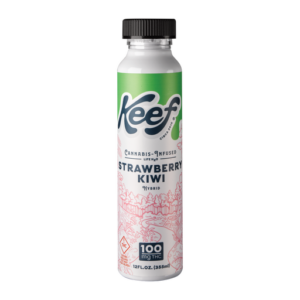 milligram options – and they’re driving some velocity – is how to compete with the 100-milligram options that are becoming established as the norm,” said Tharp. “We came across our non-carbonated product line, Keef Life H20, which low-calorie and no-sugar. It’s like agave and monk fruit. Then we started introducing some minor cannabinoids for the health-conscious use occasion, and then we had our mocktail line, which is 100 milligrams; it’s got the dosing cap and people can tincture it out. So, we think of this as our carbonated lines on the rec market, or your beer and wine offering, and then you have the non-carbonated, which is much more akin to a bottle of liquor or vodka.”
milligram options – and they’re driving some velocity – is how to compete with the 100-milligram options that are becoming established as the norm,” said Tharp. “We came across our non-carbonated product line, Keef Life H20, which low-calorie and no-sugar. It’s like agave and monk fruit. Then we started introducing some minor cannabinoids for the health-conscious use occasion, and then we had our mocktail line, which is 100 milligrams; it’s got the dosing cap and people can tincture it out. So, we think of this as our carbonated lines on the rec market, or your beer and wine offering, and then you have the non-carbonated, which is much more akin to a bottle of liquor or vodka.”
It all seemed part of Keef’s approach to finding new consumers for its beverage products. “We know that there are a bunch of different consumer segments, not just in exposure to cannabis but in cannabis beverages,” said Tharp. “The low-dose segment gets a lot of the publicity because it has a lot of potential, but there also is a very strong market of consistent consumers that have a higher tolerance, and when we looked at that – and we’re very data driven and kind of nerdy – we really wanted to have something that could be a semi-entry level product.
“Our 10-milligram is a little bit higher than the two and a halves and the twos that the Canns and the Wunders of the 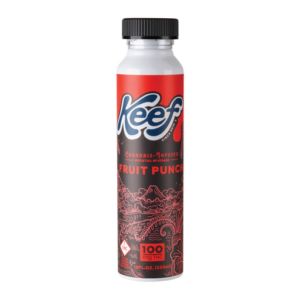 world are coming to,” he added, “but we’ve stayed true to our roots, to say, ‘Look, these are the people that got us here, and you can’t forget them as you move forward. Yes, you can adapt your products to address [changing demographics] – for example, the Keef Life H20 water or our Sparkling waters, having a low-calorie option for the high-dose consumer, because there aren’t that many product offerings out there, and it does start moving you closer towards that occasional-use and purpose-driven beverages – but we know that we’re so early in the evolution of beverages as a category that it’s good to have other companies out there attacking different niches. We don’t have to own them all; we just have to be really strong, and I would say very genuine, in our brand offerings and the ones where we do compete, and that’s what I’ve been really proud of our team for doing.”
world are coming to,” he added, “but we’ve stayed true to our roots, to say, ‘Look, these are the people that got us here, and you can’t forget them as you move forward. Yes, you can adapt your products to address [changing demographics] – for example, the Keef Life H20 water or our Sparkling waters, having a low-calorie option for the high-dose consumer, because there aren’t that many product offerings out there, and it does start moving you closer towards that occasional-use and purpose-driven beverages – but we know that we’re so early in the evolution of beverages as a category that it’s good to have other companies out there attacking different niches. We don’t have to own them all; we just have to be really strong, and I would say very genuine, in our brand offerings and the ones where we do compete, and that’s what I’ve been really proud of our team for doing.”
Are there certain factors that consumers want no matter what the beverage is? “Yes, and I think that’s one of the really strong benefits that beverages have, and that we and other brands are undertaking an educational campaign at the consumer level to show, that because it’s a beverage it is sublingual uptake, and so you will feel the effects more quickly inherently than you would with a gummy or something that goes through your digestive tract.
Doesn’t it also dissipate quicker? “They do,” replied Tharp, “but it allows you to have a more sessionable experience, which is akin to a broadly accepted social experience, and I think that’s really interesting for cannabis in general, that you can alleviate some of those barriers to entry for a more reluctant consumer, someone who wouldn’t be an early adopter of cannabis.”
Of course, another goal is consistency, which begs the question how Keef maintains it from partner to partner, and state to state. “We always say what we want to do is have the Keef that you try in Los Angeles taste exactly like the 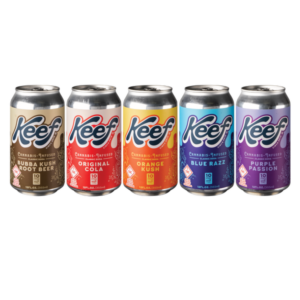 Keef you try in Maine, and I think that is one of the core pieces that has brought some brand affinity because there has been some consistency of product across a traditionally difficult product category in which to maintain quality,” he said. “I give all the credit in the world to our product team. They’ve been on the road constantly, making sure that they’re educating our partners the right way on our SOPs, making sure that they’re doing quality controls, and as we get to more states, we need to disseminate that through more of a regional quality group that can be there more frequently, instead of running our core team ragged sending them to every separate market every single week. But all joking aside, that has been a strong focus for us, and it’s something that we’re going to continue, to build out our capabilities arm throughout 2022, because we think that having a consistent product is something that has really benefited us over the last 10-plus years.“We’ve evolved our emulsion over the years and figured out what works best with our taste profiles and our drinks to limit any of those lingering aftertastes that leave a bad taste in the mouth after you have a sip of the beverage,” he continued. “We’re very interested in testing and seeing what the best balance is. We’ve worked with different partners and with some of the emulsion providers to see what is out there, and I think from an IP component, our brand and our know-how in beverages, and in cannabis beverages – which is wildly different from just having a central factory where you can do centralized production and distribution – has actually become a core asset for our team, being able to be nimble and figure out how to do this, because we have to have a beverage line in every single market with a captive supply chain.”
Keef you try in Maine, and I think that is one of the core pieces that has brought some brand affinity because there has been some consistency of product across a traditionally difficult product category in which to maintain quality,” he said. “I give all the credit in the world to our product team. They’ve been on the road constantly, making sure that they’re educating our partners the right way on our SOPs, making sure that they’re doing quality controls, and as we get to more states, we need to disseminate that through more of a regional quality group that can be there more frequently, instead of running our core team ragged sending them to every separate market every single week. But all joking aside, that has been a strong focus for us, and it’s something that we’re going to continue, to build out our capabilities arm throughout 2022, because we think that having a consistent product is something that has really benefited us over the last 10-plus years.“We’ve evolved our emulsion over the years and figured out what works best with our taste profiles and our drinks to limit any of those lingering aftertastes that leave a bad taste in the mouth after you have a sip of the beverage,” he continued. “We’re very interested in testing and seeing what the best balance is. We’ve worked with different partners and with some of the emulsion providers to see what is out there, and I think from an IP component, our brand and our know-how in beverages, and in cannabis beverages – which is wildly different from just having a central factory where you can do centralized production and distribution – has actually become a core asset for our team, being able to be nimble and figure out how to do this, because we have to have a beverage line in every single market with a captive supply chain.”
To that end, Keef still utilizes Isolate Extraction Systems, which was founded by Kelly Knutson back in the day. “We  still use Isolate Extraction machines in multiple states,” explained Tharp,” and through our emulsification process, we’ve been able to expand the types of oil and oil providers that are able to make our emulsions.”
still use Isolate Extraction machines in multiple states,” explained Tharp,” and through our emulsification process, we’ve been able to expand the types of oil and oil providers that are able to make our emulsions.”
I remarked that it sounds as if Keef is in control of the production process from oil to drink, so to speak. “You have to be,” he responded. “You have to be in control of that process and what works well with your specific beverage lines, and educating those people is a very strong focus. Like I said earlier, we’re bolstering our capabilities there. In certain markets, we want to have more boots on the ground, working in conjunction with our partners so that we maintain that consistency and don’t lose that edge.
“I think Nancy [Whiteman] would probably say the same thing,” he added. “Every partnership in cannabis is its own soap opera, but it’s a unique industry and it’s been really good to work with all of these different partners, who have been fantastic over the years. We just have to continue building the processes the right way and be able to scale them so that we are able to have a consistent product even across international lines, which is why we were so excited to be able to launch in Ontario, BC, and Alberta, over the course of the last month and a half.”
The Canadian venture has seen immediate upside, said Tharp. “The way we’re built in Canada is, we’ve got a licensee, BevCanna, that produces all of our products for the Canadian market, and they have gotten our products into three of the largest provinces. We just launched in Ontario, and once we launched, we got to the number two and number three SKUs right out the gate. So that was very exciting.”
I mentioned Uber breaking cannabis delivery ground in Canada, and how it must be in preparation for a U.S. conquest when the time is ripe. “I come from two-sided marketplaces, and I can’t wait for when these platforms are able to provide that instant gratification and have something delivered to your door,” said Tharp. “I think it’s coming, and I think some of the new states that are providing regulatory updates are allowing for this. And we are constantly looking at new delivery channels that can help us give brand exposure to new customers and help tell that story. But we also know that Rome was not built in a day, as much as we want it to be. We have to be true to our traditional channels, and we know that retail channels are constantly evolving, and there’s a lot of consolidation going on at that level, so we have to make sure that we’re not putting too much emphasis on one versus the other.”
Creating a National Cannabis Brand
Cash-flow positive since mid-2020, Keef has its eyes set squarely on the future with a stated goal to add 5-7 markets in 2022, including states such as Illinois, Michigan, Massachusetts, Oregon, and Washington, and doing it while maintaining its partnership strategy, which Tharp sees no reason to change right now. “We’ve been able to scale more quickly because we don’t own licenses,” he said, “and we’ve been fortunate to have good partners, but we are constantly watching the regulatory shifts both at the state and federal level, and it would be an interesting next evolution and process step [to get licenses].
“We look at the beverage evolution like the beverage evolution 100 years ago with Coke and Pepsi,” he added. “How do you scale quickly? You have manufacturing partners. What happens over time? You become more vertically 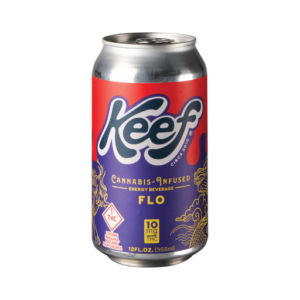 integrated once the situation allows itself. But we never wanted to go out and raise the hundreds of millions of dollars to go very quickly and build this infrastructure. We believe that we had a good product and that we could focus on a key niche that is difficult to do, build in some operational IP and capacity, and be able to scale that out and move more quickly than some of the larger operators in the space that might be trying to quickly translate traditional beverage into a unique situation where you have to have a bottling line in every single territory.”
integrated once the situation allows itself. But we never wanted to go out and raise the hundreds of millions of dollars to go very quickly and build this infrastructure. We believe that we had a good product and that we could focus on a key niche that is difficult to do, build in some operational IP and capacity, and be able to scale that out and move more quickly than some of the larger operators in the space that might be trying to quickly translate traditional beverage into a unique situation where you have to have a bottling line in every single territory.”
I asked Tharp if the idea is to create a national brand state by state, an opportunity that wasn’t there before but may be possible now. “I think that one of our key opportunities is can we create a national cannabis brand,” he replied. “And we’ve gotten enough positive feedback in enough disparate markets where we think we’ve got a good shot to be able to do that. Are we there yet? By no means. We’ve got a very long way to go. But at least we now have multiple adult-use markets where we can test out some of the strategies that you would do in a traditional industry, specifically leveraging technology and digital marketing. I come from the tech industry, and I was shocked the first few months here when you really didn’t have that ability. You weren’t able to track your acquisition costs, you weren’t able to track your lifetime value, and by and large, a lot of the dispensaries in the early days in Colorado were built Bodega style, so you were tied to a 1990s retail model, and so, it’s been really fascinating to watch the evolution of both the stores and the regulations that are allowing a more direct conversation with the end consumer.”
I asked if Keef has its own marketing budget or leaves that to the partners. “We have a marketing budget for each market, as well as national campaigns and things that we think can provide air cover to the folks on the ground,” said Tharp. “There are point-of-purchase strategies, partnerships at the retail level strategies to try to drive velocity during the early parts of a launch, and there are also national communication strategies and making sure that you can take what works in your most mature markets and expand upon it. We’ve been fortunate to be in Colorado for so long, where we can test a lot of new technologies and other things in a controlled way, in order to understand if there is some ROI and then expand that to other markets. That’s getting really exciting and really fun for our team because we are able to take control tests and start to scale them across all these markets.”
As a self-professed nerd, it sounds as though Tharp is using whatever technologies he can find to get as close as 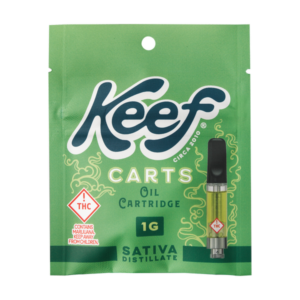 possible to the consumer. “Absolutely, and it goes both ways,” he said. “You can’t forget the retail employees. I think you have to figure out how to have a better dialogue with the people who are on the front line, and so in each market that we go into we have someone who’s maniacally focused on sell-through at the retail level. That’s what we have to do. You have to have that dialogue. It’s very similar to how the wine and spirits and now alcohol industry was built, and so we model a lot of it after that, with some unique tweaks because it’s cannabis and there are certain restrictions. But the alcohol industry had those restrictions as well, so it’s an evolution of finding new tactics, finding new tests, seeing what works, being okay with the fact that some things might not work, and we’re getting to a unique point in time where we can do this.”
possible to the consumer. “Absolutely, and it goes both ways,” he said. “You can’t forget the retail employees. I think you have to figure out how to have a better dialogue with the people who are on the front line, and so in each market that we go into we have someone who’s maniacally focused on sell-through at the retail level. That’s what we have to do. You have to have that dialogue. It’s very similar to how the wine and spirits and now alcohol industry was built, and so we model a lot of it after that, with some unique tweaks because it’s cannabis and there are certain restrictions. But the alcohol industry had those restrictions as well, so it’s an evolution of finding new tactics, finding new tests, seeing what works, being okay with the fact that some things might not work, and we’re getting to a unique point in time where we can do this.”
An exciting aspect of “doing this” is the prospect of purpose-driven drinks, something that Tharp has addressed in recent interviews as a bedrock of future offerings. The idea of utilizing different cannabinoids is tantalizing, of course, but how realistic is it, and are these actual products for the foreseeable future, or for five years from now? “As people who are in the industry, we’re further along in our education curve on minor cannabinoids than the general population,” he replied. “I think we have to temper some of our excitement for immediate returns on these, but I think that all falls into the general strategy for beverages in general. We’ve got to be on an aggressive educational campaign so that people can understand what these cannabinoids can do. We talked about being early in beverage, but I think we’re even earlier on minor cannabinoids.”
I asked if the products themselves might serve as educational tools. “Absolutely,” responded Tharp. “Take the use case of CBN being added to certain edibles to help with sleep. I would love for there to be more studies that are 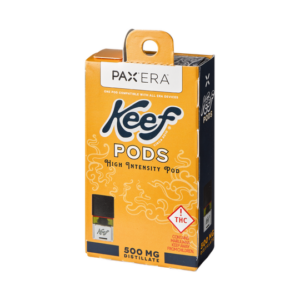 allowed to do this so that we could speak to it more, but we have to be very cautious around what claims are made with this, and rightfully so. I don’t think you want to get too far out in front of the regulations and have a bad experience come back that provides a black eye for the industry in general, because there are so many people working so hard to show that this is a responsibly developing industry that is a very viable alternative to the alcohol industry and other wellness products.”
allowed to do this so that we could speak to it more, but we have to be very cautious around what claims are made with this, and rightfully so. I don’t think you want to get too far out in front of the regulations and have a bad experience come back that provides a black eye for the industry in general, because there are so many people working so hard to show that this is a responsibly developing industry that is a very viable alternative to the alcohol industry and other wellness products.”
That said, Tharp said there is greater acceptance of infused beverages with each year. “We have seen considerable uptake over the last two years specifically,” he added. “We always joke that we thought our path to broader acceptance was going to be social consumption – which it still will be, and it will be an amazing lever that can be pulled in markets – but the isolation of COVID and having people being at home in their comfortable environment led to a lot of experimentation with products and product formats that they typically wouldn’t do if they were just living their daily lives, and I think that has accelerated the adoption of beverage.”
With so much upside to look forward to, the inevitable question about acquisition must be asked, as well as whether Keef is itself in acquisition mode. “M&A is an inevitable consequence of markets maturing, so we understand, knowing that it is a wildly changing landscape and every six months you will have a different landscape. What we’ve really tried to do in conjunction with our board is say, let’s continue on the path and we know that we have some large markets that we can really come into and be a player. Let’s continue that trajectory and not be focused on who is coming in to buy us. If we execute the way we believe we’re capable of, those conversations come about, and when we have a unique niche such as beverage that is difficult to do, I think just being very good at that and having the bumps and bruises and arrows from 10 years of operation is attractive to certain people who might be a strategic partner down the road.”
I asked what qualities Keef looks for in a potential partner. “We’ve been fortunate enough to be able to work with some great partners over the years and been able to get some attributes such as being able to have a difficult conversation, being able to be even keeled and level-headed when those difficult circumstances arise, because inevitably they do,” replied Tharp. “I think having infrastructure, like I talked about previously, is interesting, because we have such a niche product line. We love to be able to say, ‘Alright, you have this portfolio; we can help you with a strong tent-pole brand to get into more stores and create some pull so that it’s a win-win across the board.’
“We’re looking for people that are able to have that difficult conversation,” he added about what he looks for in a partner. “We’ve never had an easy launch, and anyone that says differently in cannabis, they might be fibbing a little bit. There are challenges every single moment of a launch in a new territory.”
I noted that to a one, every person I have interview has said that company cultures need to mesh for partnerships to succeed. “Integrations are really tough,” agreed Tharp. “In a former life, I was in charge of doing two integrations of acquired competitors, and it was difficult, and it is very difficult to match the way people used to do something with the ways that the acquirer would do something. But I think if you have this shared core of, we know where the guiding light is, that the shared common goal can outweigh the differences, and that was what really behooved us when I worked for Handy, which is now part of [Angie’s List]. We had a couple of integrations with some competitors, and just focusing on a shared goal really helped forge some of the bonds, and I think that’s something that is starting to take place in this industry.”
While Tharp would prefer not to get into specific revenue numbers, the company has seen steady growth year-over-year, and its expansion plans auger increased revenue as it puts its feet down in more states. “We have a pretty good handle on what our CapEx is going to need to be in each new market, and we’re getting more and more use cases of how long it takes for us to establish certain thresholds in a market. And fortunately, those periods of time are decreasing because of the wider brand acceptance across markets and wider brand presence. So, we evaluate from a market-by-market basis how that can be impacted and look at how much additional branded wholesale revenue can be driven in these budding and burgeoning new markets. And 2022 gets us really excited because there is so much opportunity that we think we can leverage some of the hard knocks that have taken place the last 10 years, and specifically in the last three years.
“We’re on a good trajectory, and we have turned the cashflow corner,” he added. “We also have aggressive expansion plans, and we are currently sitting in a number one space, so those are obvious talking points that you want to get out into the world. But we never want to come off as a company that’s trying to self-promote too much, and hopefully you’ve gotten that from me over the last hour.”
Asked about any upcoming announcements, Tharp said, “We’ve got some interesting things in the works that I think will come about in the first quarter that I can’t announce just yet. There are also some good partnerships that are coming down the line, and I think that’s a result of us staying in our lane and being focused. I’m excited about that. There’s nothing that we can announce right now, and there’s nothing earth shattering like Nancy’s news, but we’ve got some strong announcements upcoming.
Any new SKUs in 2022? “Possibly,” he said. “We’ve got an innovation pipeline that we’re continuing to work on, but we also know that there’s so many markets that haven’t had the chance to experience our core offering, and we don’t want to sacrifice that experience. The way we’ve always looked at it, we don’t want to sacrifice our relationship with the people that got us to a certain point in the name of doing something for people that are possibly new customers, and trying to find that balance has been key to our success.”
MJ Shareholders
MJShareholders.com is the largest dedicated financial network and leading corporate communications firm serving the legal cannabis industry. Our network aims to connect public marijuana companies with these focused cannabis audiences across the US and Canada that are critical for growth: Short and long term cannabis investors Active funding sources Mainstream media Business leaders Cannabis consumers


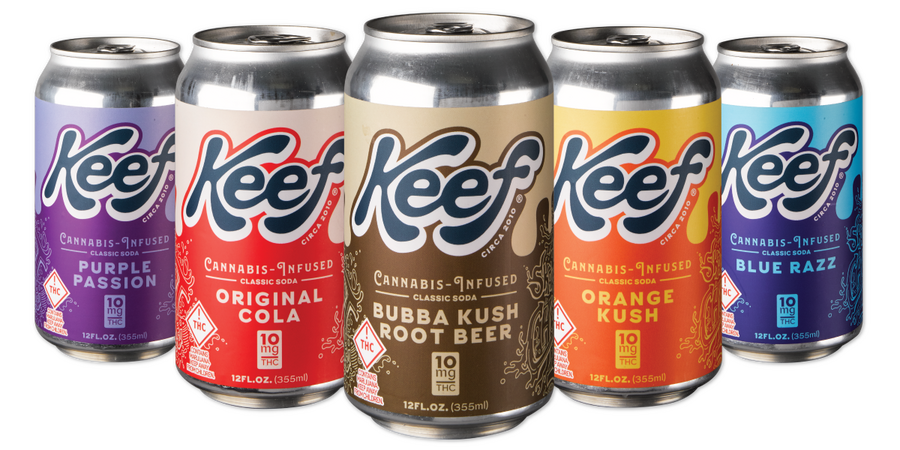


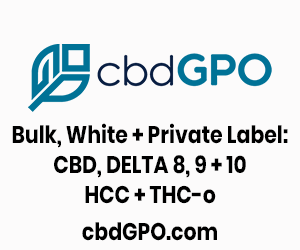





No comments so far.
Be first to leave comment below.